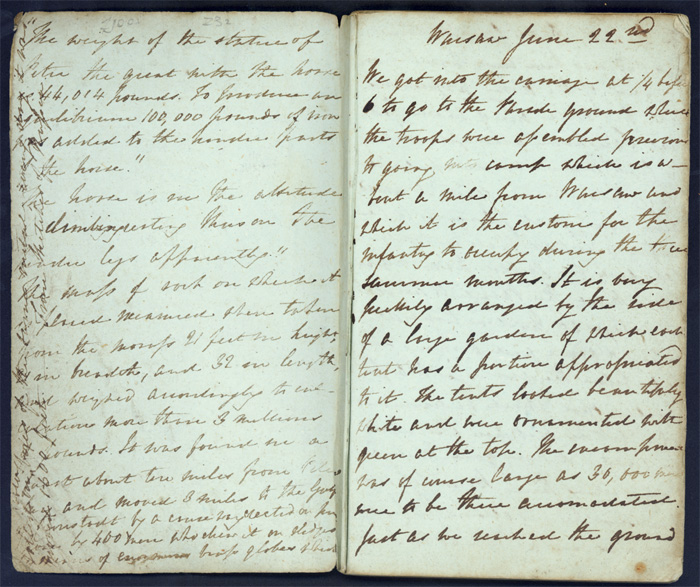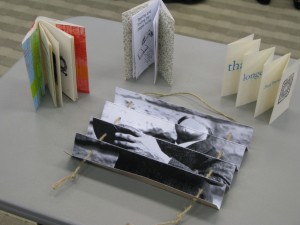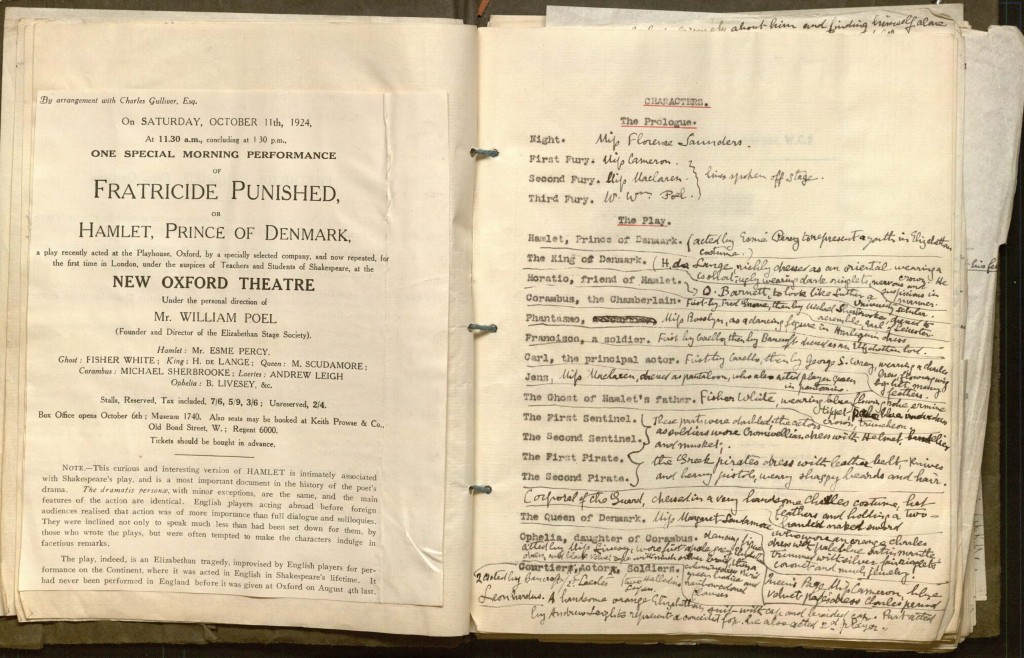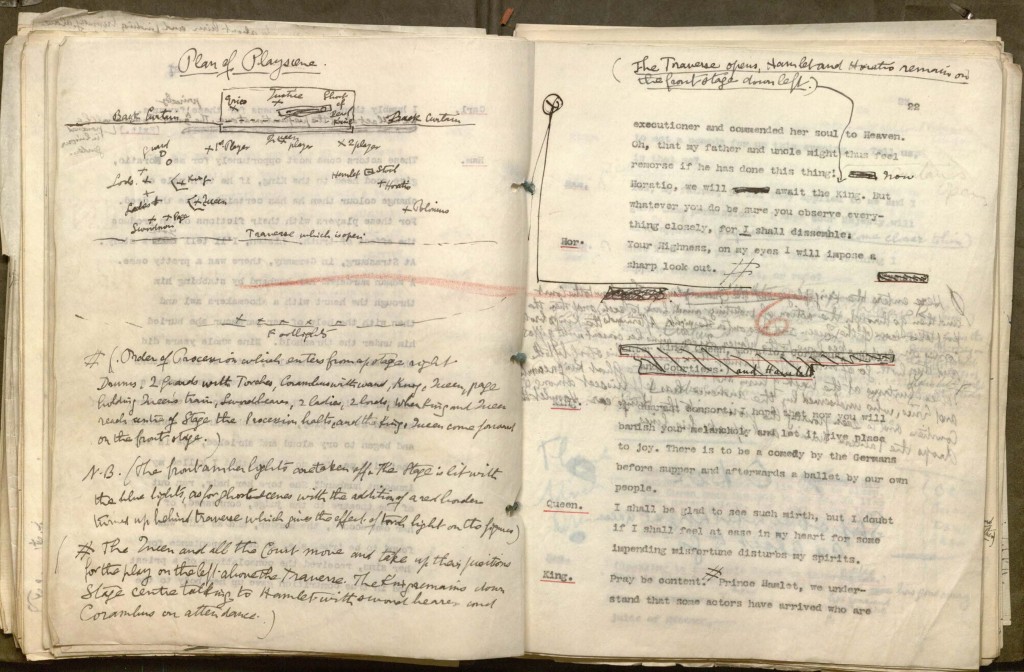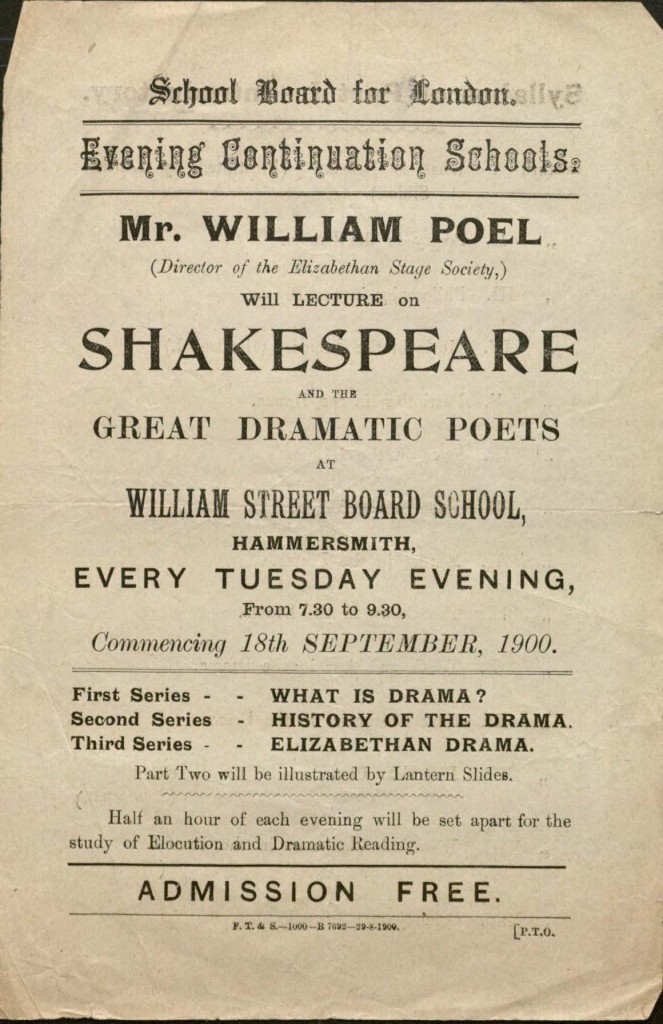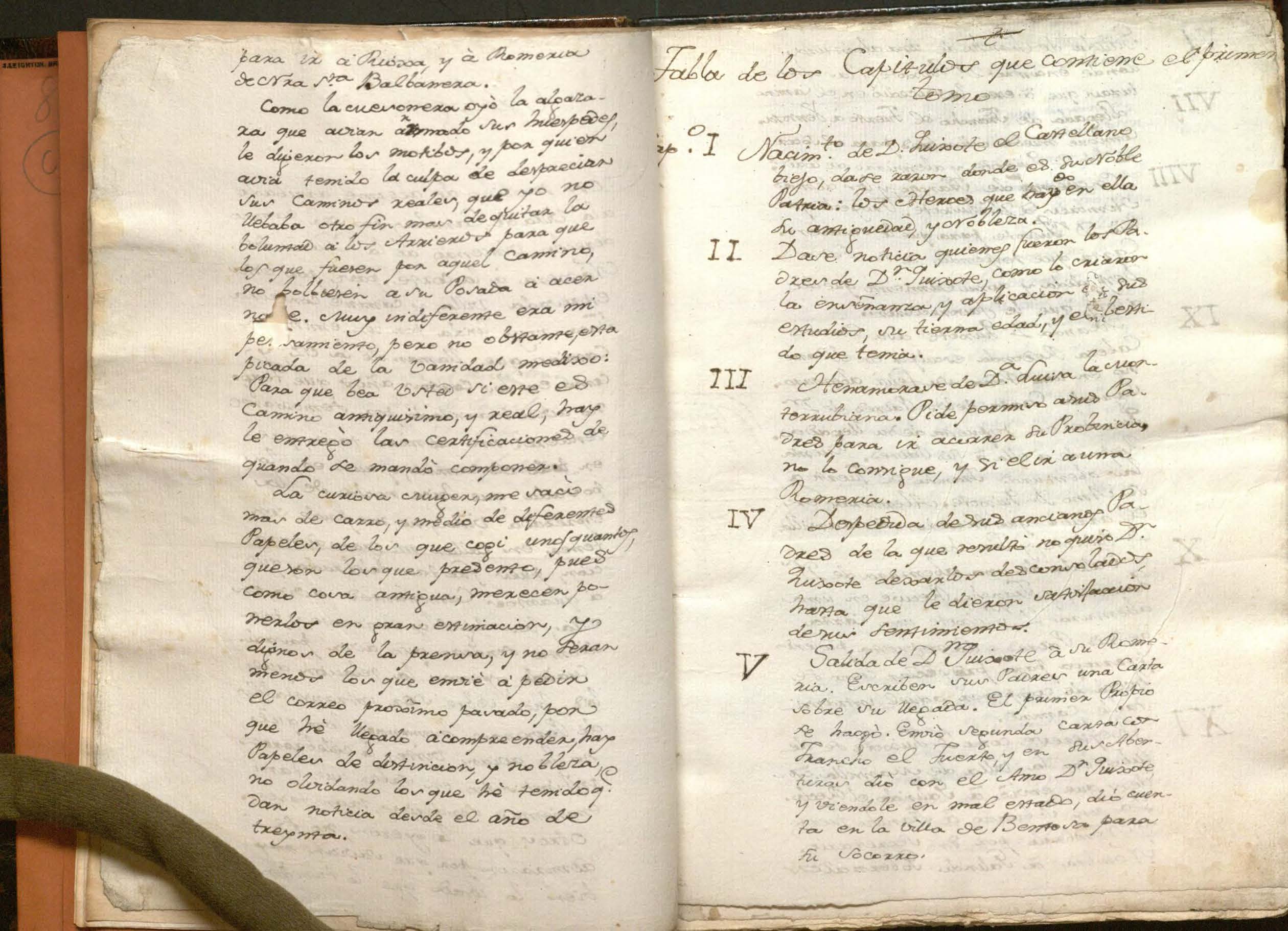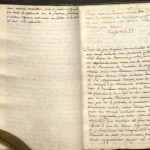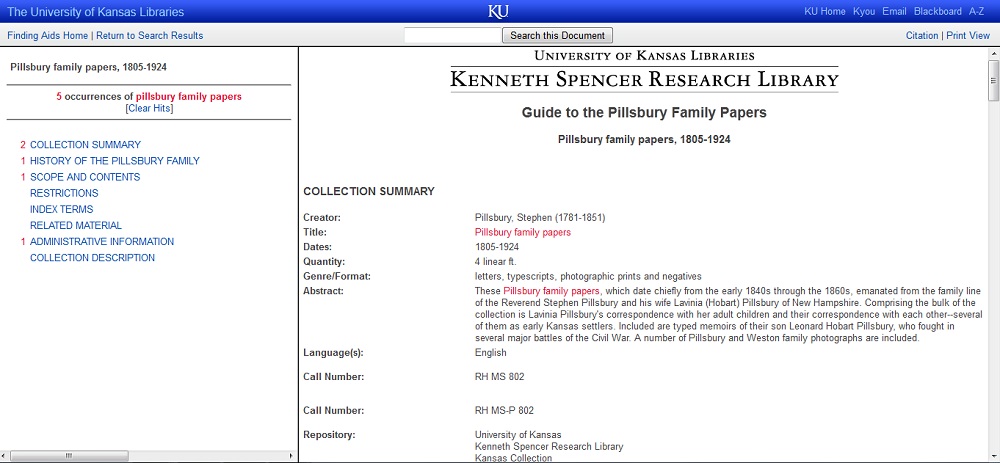
Screenshot of the top of a Spencer finding aid for the Pillsbury Family Papers. This will be
the example finding aid used throughout this blog post. The full document
is available on the Library’s website. Click image to enlarge.
Have you ever conducted research at an archives or special collections library, come across the term “finding aid,” and wondered, “what in the world does this mean?!” If so, you’re not alone. Finding aids are a standard tool for archival materials, but most people who aren’t archivists, special collections librarians, or experienced researchers are unfamiliar with the term. On the other hand, finding aids are the gateway to archival collections – for better or worse – so understanding what they are is an important component of conducting archival research.
So, what is a finding aid?
It’s a document, on paper and/or online, created by a repository’s staff members.
It generally contains the same information found in a catalog record (an overview of the collection) plus much more detailed information that the catalog record can’t accommodate.
It describes the materials in a specific collection.
It provides contextual information about the collection.
It’s an essential tool for library staff members and researchers. Without finding aids, a library would be full of collections but have nothing written down about them. Locating and understanding collections and materials within them would be immensely difficult, if not impossible.
Who creates finding aids and why?
When a repository like Spencer acquires an archival collection, a substantial amount of work is then required to prepare the materials for use by researchers. This effort, undertaken by library staff members, is called processing. It involves going through all of the materials in the collection; organizing or arranging them in a systematic way that will facilitate use; rehousing materials in acid-free enclosures, like boxes and folders; and administering basic preservation treatments and looking out for larger problems like mold or insect damage, which is harmful to materials and users. As they work, archivists make decisions and discoveries. They record this information; combine it with details gleaned from materials in the collection, provided by the donor, or acquired through additional research; and compile everything in one place, a finding aid.
How do finding aids help researchers?
The primary goal of a finding aid is to aid, or assist, researchers (including staff members) in finding the materials they need. Hopefully, information obtained from finding aids will minimize the amount of time researchers spend examining collections or parts of collections that are irrelevant to their work.
I sometimes think of a finding aid as a Choose Your Own Adventure book. Each section of the document reveals additional details about the collection, and after reading each section the researcher asks him/herself: given what I now know about this collection, do the materials it contains still seem relevant to my project? If the answer is yes, the researcher will either continue reading the finding aid or decide to begin examining the materials in the collection. If the answer is no, the researcher can abandon the finding aid and begin the process again with a new one.

Click image to enlarge.
Look, for example, at the Collection Summary section of the example finding aid above (for Spencer’s collection of Pillsbury Family papers). It provides information to answer these important questions: How much time do I need to allot to go through this collection – is there one box or one hundred? Are the materials in the collection written in a language I can read? Are these the types of materials I need – or, for example, does this collection contain only photographs when I need correspondence? Are the people who created these documents the people I’m researching, or are they related or an entirely different group? Do the materials in the collection fall within the date range I’m studying?
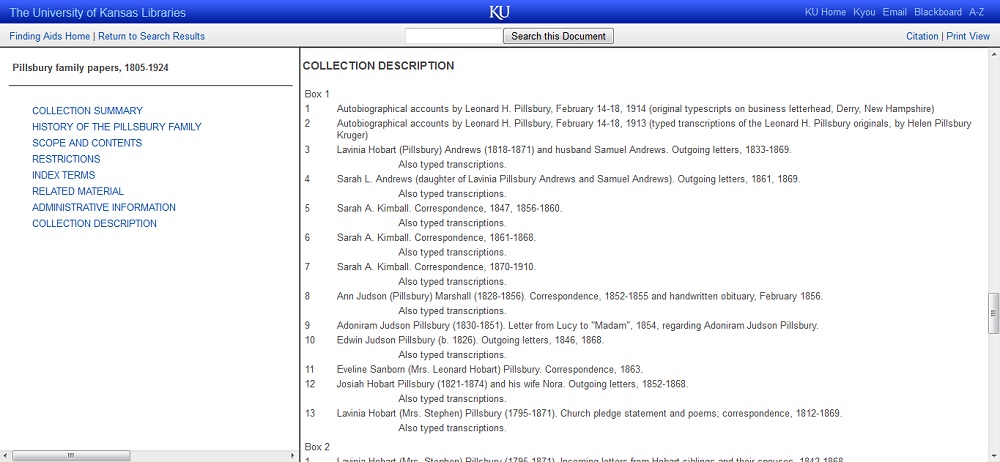
Click image to enlarge.
Subsequent sections of the finding aid more thoroughly answer these questions or address new ones. Perhaps most significant is the Collection Description. This section identifies the contents of specific boxes and/or folders and also indicates how materials are arranged (e.g. by format, date, author or recipient name). Having determined that the collection may be relevant to his/her project, the researcher can use the information in this section to ascertain how much of the collection s/he will need to go through and where specific documents (or groups of documents) are located.
What are the limitations of finding aids?
Depending on factors like the size of a collection, the type of materials it contains, and when it was processed, finding aids generally provide some information about significant people, places, events, and topics represented in the collection. However, without unlimited time to process, staff members are unable to create completely comprehensive finding aids that list all names and topics that occur within all documents in a collection. Most, in fact, are not included.

Think of how many letters about Christmas (and other topics) might be “hidden” in these boxes!
Click image to enlarge.
The result is that a finding aid search may turn up few or no results, not because a repository doesn’t have archival materials on that topic, but because that topic wasn’t specifically named in a finding aid. When this happens, try different search terms or approach your topic from another angle. For example, if you’re looking for information about how Christmas was celebrated in nineteenth-century America, and a search for “Christmas” turns up limited or unhelpful results, you might instead search for collections containing family correspondence from that time period. The larger task would then be to read letters sent and received in December and January of various years.
Finding aids are exceptionally useful, but they can also be tricky documents to navigate, even for experienced researchers. If you encounter any difficulties using Spencer’s finding aids, don’t hesitate to contact me (cdonnelly@ku.edu) or another staff member for assistance.
Caitlin Donnelly
Head of Public Services

